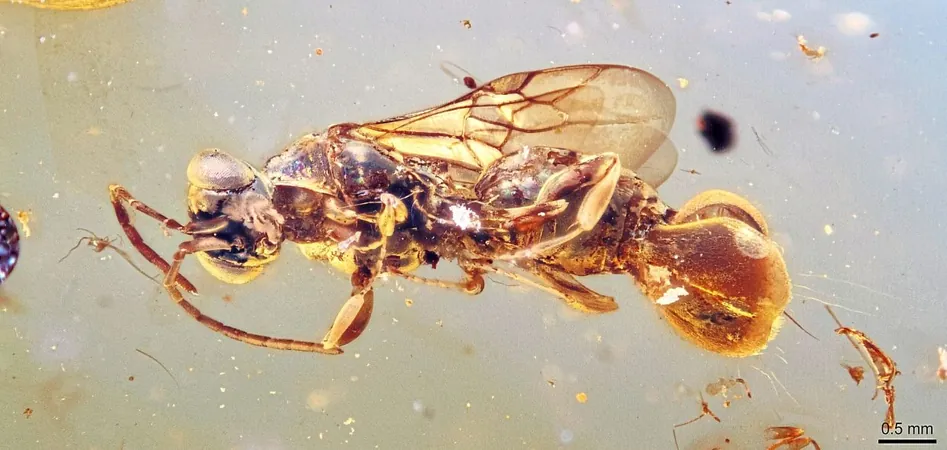
Breakthrough Cell Sorting Device Detects Cancerous Cells in Real Time – A Game Changer for Diagnosing Cancer!
2025-03-25
Author: Arjun
Introduction
Detecting cancer in its early stages can dramatically increase the chances of successful treatment. A pioneering study from researchers at K N Toosi University of Technology (KNTU) in Tehran has revealed a revolutionary method for analysing circulating tumour cells (CTCs) found in blood. Traditionally, this process has been a laborious challenge that requires large sample sizes. However, thanks to innovative advancements in ultrasonic technology, we may have a solution that is not only efficient but also available in real-time.
Research Insights
In their groundbreaking research published in the journal Physics of Fluids, the team led by senior author Naser Naserifar—an assistant professor in mechanical engineering—explored the fascinating world of acoustofluidics. This cutting-edge technology harnesses the power of standing acoustic waves (SAWs) to effortlessly separate CTCs from red blood cells (RBCs) without causing any damage. “We aimed to create a microfluidic, lab-on-a-chip device that is user-friendly for medical professionals while ensuring precise cell separation,” reveals Naserifar.
Device Functionality
What makes this device remarkable is its dual pressure acoustic fields operating within specially designed microchannels. These channels facilitate the movement of CTCs toward an outlet for additional analysis—paving the way for further culture tests and laboratory procedures. Researchers utilized advanced computational modelling, experimental tests, and artificial intelligence (AI) algorithms to study the acoustofluidic interactions and develop predictive datasets for CTC behavior inside the human body.
User-Friendly Design
“We incorporated a sophisticated yet user-friendly acoustofluidic microchannel optimized for swiftly and accurately isolating CTCs from RBCs,” states Afshin Kouhkord, who contributed significantly to the project as a master’s student. Despite the advanced technology involved, the device is designed for straightforward operation in clinical settings.
Promising Results
Initial evaluations have confirmed the device's potential through numerical simulations and prototype testing. Using lithium niobate for the prototype and polystyrene microspheres as stand-ins for blood cells, they achieved an impressive accuracy rate of within 3.5% of their simulations.
Future Implications
“This groundbreaking approach not only advances lab-on-chip technology but also signifies a monumental leap toward personalized medicine, enabling real-time molecular analyses and point-of-care diagnostics,” Kouhkord and Naserifar assert.
Next Steps
As the researchers continue refining their design, they aim to create a portable device powered by a small battery. This advancement could be a game-changer, especially in resource-limited and remote locations, where access to typical healthcare technologies may be scarce.
Conclusion
Stay tuned as this exciting technology progresses, potentially revolutionizing how we detect and treat cancerous cells in the near future! The implications for improved patient outcomes could be nothing short of revolutionary.


 Brasil (PT)
Brasil (PT)
 Canada (EN)
Canada (EN)
 Chile (ES)
Chile (ES)
 Česko (CS)
Česko (CS)
 대한민국 (KO)
대한민국 (KO)
 España (ES)
España (ES)
 France (FR)
France (FR)
 Hong Kong (EN)
Hong Kong (EN)
 Italia (IT)
Italia (IT)
 日本 (JA)
日本 (JA)
 Magyarország (HU)
Magyarország (HU)
 Norge (NO)
Norge (NO)
 Polska (PL)
Polska (PL)
 Schweiz (DE)
Schweiz (DE)
 Singapore (EN)
Singapore (EN)
 Sverige (SV)
Sverige (SV)
 Suomi (FI)
Suomi (FI)
 Türkiye (TR)
Türkiye (TR)
 الإمارات العربية المتحدة (AR)
الإمارات العربية المتحدة (AR)